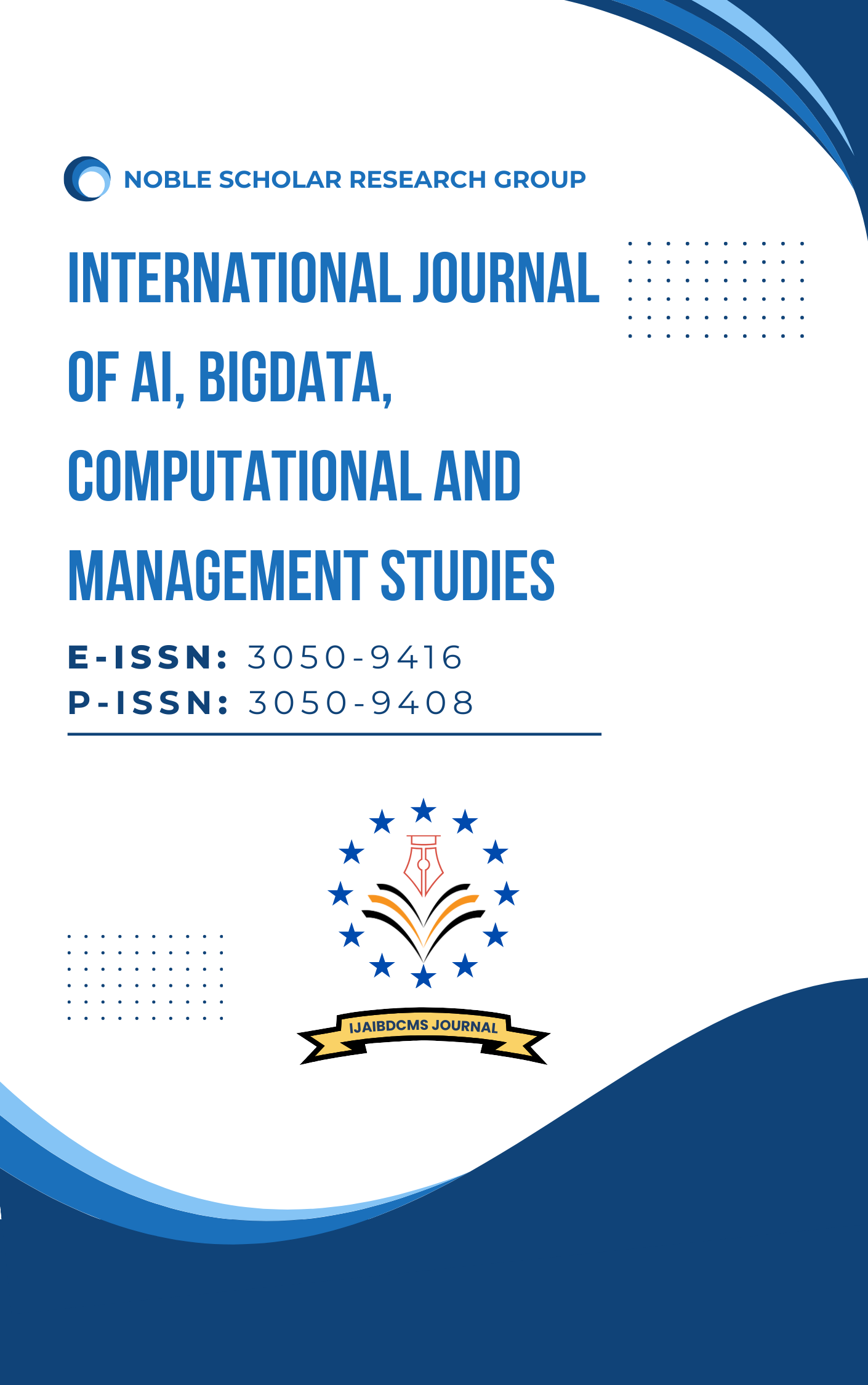Using Swarm Intelligence and Graph Databases for Real-Time Fraud Detection
DOI:
https://doi.org/10.63282/3050-9416.IJAIBDCMS-V2I1P103Keywords:
Swarm Intelligence, Real-Time Fraud Detection, Graph Databases, Data Analytics, Machine Learning, Financial Security, Adaptive Systems, Fraud Patterns, Performance Metrics, Fintech, Pattern Recognition, Anomaly DetectionAbstract
In an era where financial fraud tactics evolve rapidly, traditional fraud detection systems struggle to keep up with the sophisticated schemes emerging daily. This article explores how integrating swarm intelligence and graph databases offers a potent solution for real-time fraud detection, particularly in financial sectors requiring agile, precise monitoring. Inspired by the collective behavior observed in natural systems like ant colonies and bird flocks, swarm intelligence provides an adaptive mechanism that learns from each interaction within the system. This intelligence-driven approach can detect patterns in fraudulent activities as they change, enabling the system to anticipate and respond to new strategies fraudsters deploy. On the other hand, graph databases offer an ideal platform for visualizing complex relationships and interactions among entities. In contrast to traditional relational databases, graph databases can quickly model and query relationships, making them well-suited for uncovering hidden connections that signify potential fraud. When combined with swarm intelligence, graph databases enhance fraud detection by highlighting clusters of unusual activity, visualizing transaction networks, and identifying suspicious behavior patterns that might go unnoticed. This fusion results in a system that improves detection accuracy and continuously adapts to evolving threats. By leveraging swarm intelligence's flexibility and graph databases' analytical strengths, financial institutions can build a dynamic fraud detection framework that proactively identifies emerging threats, reducing false positives and enhancing trust in the institution's security measures. Anticipated outcomes include faster response times, reduced financial losses, and a robust defense against fraud that grows stronger with each detection event. In sum, this article underscores the transformative potential of swarm intelligence and graph databases, providing an innovative pathway toward a future of real-time, adaptable fraud prevention
References
1. Idris, N. B., & Shanmugam, B. (2005, December). Artificial intelligence techniques applied to intrusion detection. In 2005 Annual IEEE India Conference-Indicon (pp. 52-55). IEEE.
2. Cansado, A., & Soto, A. (2008). Unsupervised anomaly detection in large databases using Bayesian networks. Applied Artificial Intelligence, 22(4), 309-330.
3. XKhan, M. U. (2009). Artificial Intelligence– II: Anomaly detection in data streams using fuzzy logic.
4. Botha, M., Von Solms, R., Perry, K., Loubser, E., & Yamoyany, G. (2002, September). The utilization of artificial intelligence in a hybrid intrusion detection system. In Proceedings of the 2002 annual research conference of the South African institute of computer scientists and information technologists on Enablement through technology (pp. 149-155).
5. Hill, D. J., Minsker, B. S., & Amir, E. (2007, July). Real-time Bayesian anomaly detection for environmental sensor data. In Proceedings of the Congress-International Association for Hydraulic Research (Vol. 32, No. 2, p. 503).
6. Kumar, G., Kumar, K., & Sachdeva, M. (2010). The use of artificial intelligence based techniques for intrusion detection: a review. Artificial Intelligence Review, 34, 369-387.
7. Arunkumar Paramasivan. (2020). Big Data to Better Care: The Role of AI in Predictive Modelling for Healthcare Management. International Journal of Innovative Research and Creative Technology, 6(3), 1–9. https://doi.org/10.5281/zenodo.14551652
8. Kasetty, S., Stafford, C., Walker, G. P., Wang, X., & Keogh, E. (2008, November). Real-time classification of streaming sensor data. In 2008 20th IEEE International Conference on Tools with Artificial Intelligence (Vol. 1, pp. 149-156). IEEE.
9. Ramos, C. C. O., de Sousa, A. N., Papa, J. P., & Falcao, A. X. (2010). A new approach for nontechnical losses detection based on optimum-path forest. IEEE Transactions on Power Systems, 26(1), 181-189.
10. Kou, Y., Lu, C. T., Sirwongwattana, S., & Huang, Y. P. (2004, March). Survey of fraud detection techniques. In IEEE international conference on networking, sensing and control, 2004 (Vol. 2, pp. 749-754). IEEE.
11. Kurshan, E., Shen, H., & Yu, H. (2020, September). Financial crime & fraud detection using graph computing: Application considerations & outlook. In 2020 Second International Conference on Transdisciplinary AI (TransAI) (pp. 125- 130). IEEE.
12. Sarma, D., Alam, W., Saha, I., Alam, M. N., Alam, M. J., & Hossain, S. (2020, July). Bank fraud detection using community detection algorithm. In 2020 second international conference on inventive research in computing applications (ICIRCA) (pp. 642-646). IEEE.
13. Molloy, I., Chari, S.,Finkler,U.,Wiggerman, M., Jonker, C., Habeck, T., ... & van Schaik, R. (2017). Graph analytics for real-time scoring of cross-channel transactional fraud. In Financial Cryptography and Data Security: 20th International Conference, FC 2016, Christ Church, Barbados, February 22–26, 2016, Revised Selected Papers 20 (pp. 22-40). Springer Berlin Heidelberg.
14. Anwar, A., & Mahmood, A. N. (2016). Anomaly detection in electric network database of smart grid: Graph matching approach. Electric Power Systems Research, 133, 51-62.
15. Choi, D., & Lee, K. (2018). An artificial intelligence approach to financial fraud detection under IoT environment: A survey and implementation. Security and Communication Networks, 2018(1), 5483472.
16. Akoglu, L., Tong, H., & Koutra, D. (2015). Graph based anomaly detection and description: a survey. Data mining and knowledge discovery, 29, 626-688.



